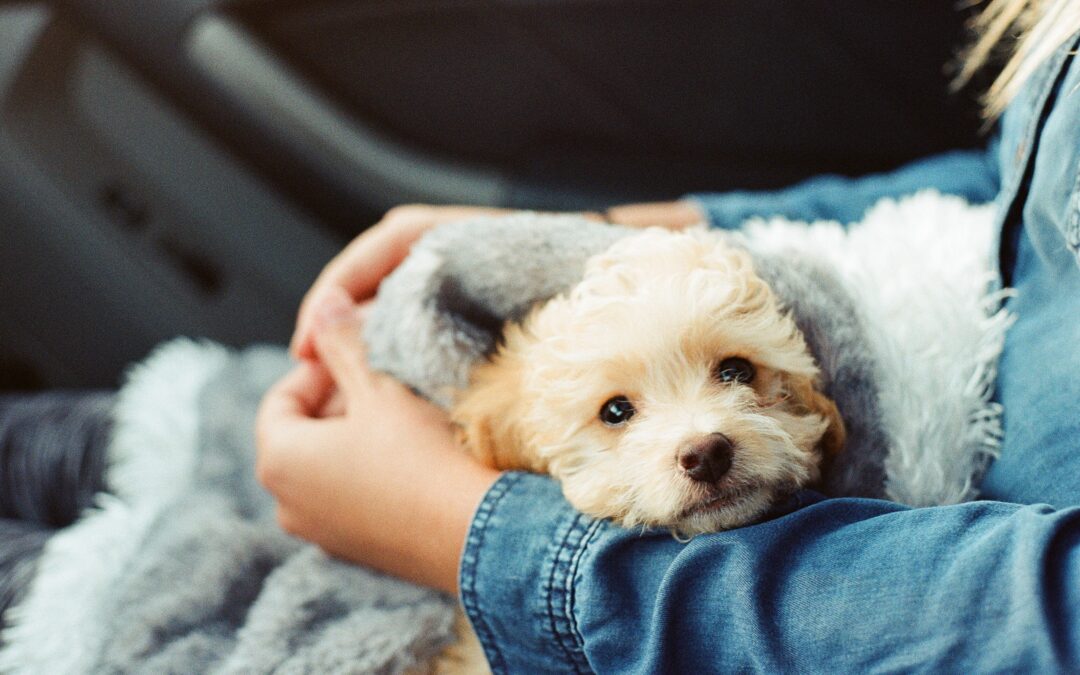Bringing a new pet into your family is a very exciting (and super busy) time! While most people take extra care to ensure that they’ve got all of the equipment, food and toys they’ll need to ensure a smooth transition for their puppy or kitten into family-life, there are a few ways you should consider helping your pet to adjust emotionally to their new digs.
Make it Safe
Just like when we bring a real life human baby home, we need to take some extra measures to ‘Pet-safe’ our homes ready for a new addition. Lift your breakables up to higher shelves, store shoes in closets behind doors, consider safety gates for stairways or rooms that are off-limits and lock cabinets with pet food for particularly determined pooches. If you have other pets already in your home, take the time and care to introduce them slowly and carefully, with supervision and plenty of space.
Introducing to children
Whether your children are tiny babies, curious toddlers or school-aged, it is important to lay down some ground rules when it comes to interactions with the new pet. Explain where your pup or kitty likes pats, and where they don’t like pats, how they like to be held, where they are allowed to go. Keep a keen eye on younger children with new pets as sometimes curiosity can get the better of them, and your fur-baby could end up with a pulled tail, a poke in the eye, unfortunately in some cases we’ve seen, dislocated elbows from pets being lifted by the forelimbs. Use your designated reward system (treats, whistles, clickers etc.) to show your pet that they are doing a great job when they interact gently with your children, and be sure to remove them from introductions if they begin to show stress or duress. Signs may include licking lips, yawning, averting gaze, panting, pacing, hiding, shaking, removing itself from the room and drooling. Remember young children learn by staring and this can be very intimidating for animals and children are unfortunately at face height if a et does snap.
Regular feeding space and times
When your pet first arrives home try to keep the diet the same as, this will reduce any upset tummies. This might sound like a no-brainer, but offering your new pet regular food in a consistent place lays the groundwork for feelings of trust, familiarity and the pecking order in your family. Do not change the diet when your pet first comes home, this time is stressful and can lead to upset tummies. Changing the diet will only make this worse. Puppy schools often suggest feeding your pup the same time as your family eats so that they do not sit there and give you those woe-is-me eyes. Once you give in you will never eat a meal in peace again. Whatever you decide to do, be sure to have a designated feeding area available to your new pet, and, especially in the early days you may need to feed 3-4 times a day as they cannot manage without food for long periods.
Toilet training –
Toilet training can take lots of time, commitment and patience, there is no denying it. Check out our toilet training tips that will advise you through the necessary steps to make this part of pet ownership a walk in the park! J
What happens when you go away?
It’s really important that you consider your calendar for the next few months, and make sure you have allocated time to helping your new puppy or kitten adjust to their new family life. At this busy time of year, when everyone seems to travel or head away on long, warm holidays, you might like to consider saving your pennies and staying home with your pet. It is crucial not to “abandon” them early on in your relationship, as this time is going to set up the trust you’ve been working so hard to establish. If you can’t avoid going away, look in to bringing in a pet sitter to stay in your home to walk your dog or feed your cat. Alternatively, seek reputable boarding kennel or cattery that will offer your pet social experiences, food from home and as many cuddles as they’d like.
Taking a few extra precautions to ensure that your new pet adjusts to their new home will cost you nothing but your time and patience. With a little extra TLC in the first few months of cohabitation, you can help your pet to understand that they have a safe, loving home and a trustworthy, loyal owner. Your efforts will be paid off in years of lap cuddles, licks and noisy front-door greetings, and it will be ever-so-worth it for both you and your new fur-baby – we promise!

